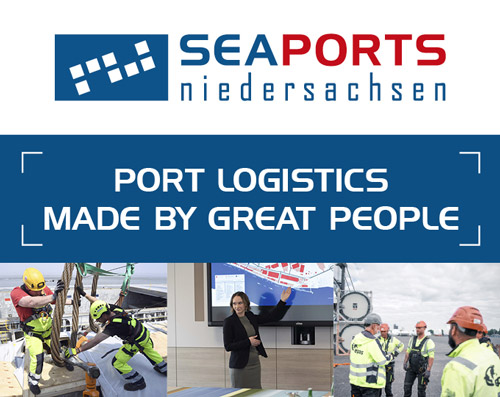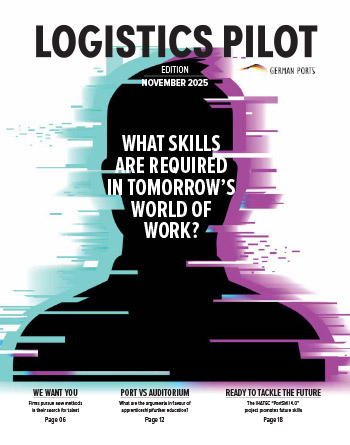With the Smart Port concept, bremenports not only wants to drive digitalisation in its ports, but also promote networking between stakeholders in order to remain competitive in the long term.
On behalf of the Senator for Science and Ports, bremenports had a SWOT analysis carried out between December 2021 and March 2022 to determine the strengths, weaknesses, opportunities and threats of Bremen’s ports and to derive specific recommendations for action. The analysis involved various local stakeholders in the port industry in the form of online surveys, interviews and workshops in order to obtain as broad and practical an opinion as possible. The results, which are now available, highlighted one thing in particular. According to port stakeholders, cooperation within the stakeholder network has been working satisfactorily for a long time, but the use of digitalisation and new technologies could optimise interactive processes even further in terms of coordination and efficiency.
“We are building on exactly this, using an array of different projects,” reported Becker. “In this context, it’s important that all those involved continue to exchange ideas closely with one another. Because that’s the only way we can allay fears of digitalisation, build trust and learn from each other.” According to Becker, Smart Port is not an isolated project with a clearly defined time frame, but rather a toolkit of measures “that are now being addressed, and not sidelined, in order that Bremen Ports can advance to the next level – with visible and measurable progress of this within two to four years.”
Two pilot projects
Two current examples of this endeavour are the ‘Digitale Außenweser’ and ‘PRINOS’ projects. The first project aims to make the Außenweser ‘digital’, so to speak, as it is perceived a potential competitive disadvantage that Bremerhaven and the Außenweser area have not had any Nautical Terminal Coordination to date. The aim of this project – in which bremenports, Eurogate and the Hamburg Vessel Coordination Center (HVCC) are working side by side – is to make better use of existing terminal capacities with transparent and continuously updated information and to optimise resource planning, as well as to plan ship calls in advance and thus also reduce fuel consumption. “‘Digitale Außenweser’ aims to involve the navigators, shipowners, handling companies and many other stakeholders in events in such a way that the current traffic and communication processes in this area can be analysed in detail. This way, a decision can ultimately be made on a suitable digital-operating concept that everyone can back,” said Becker.
The ‘PRINOS’ project – which stands for Port Railway Information and Operating System – is a new IT system with a modular structure that is intended to further improve operations at Bremen’s port railway. The ‘PRINOS’ real-time operating roll-out is planned in three stages: firstly in September at the Bremen Grolland site, then from October in Bremen Innenhafen, and from December in Bremerhaven. As a common data platform, the PRINOS customer portal is intended to enable up-to-date communication between those authorised for access, the shunting service providers and the terminals. This aims, in particular, to support capacity planning, scheduling, statistics and fee-taking for the port railway.
Building on these two pilot projects, Becker stated that they then intend to successively implement further digitalisation projects, always with the aim of securing the competitiveness of Bremen’s ports in the long term. “To be in the top of our field, we need to actively shape the Smart Port transformation and make it attractive for everyone. This is what we are starting to do now,” explained the IT manager. However, change always involves risks. That is why it is conceivable that there will sometimes be setbacks on the way to a digital port structure. What is important is to stick together on the journey. (bre)
In several workshops, bremenports brought stakeholders from the port industry on board to promote exchange amongst the groups. Daniel Becker, Maxim Neiser, Patrick Alexander Rugenstein, Alexander Welk, Reno Hahn, Laura Miggo, Maik Baudeck, Joachim Bohte and Dirk Friedsam all met recently at a “Digitale Außenweser” workshop.

Logistics Pilot
The current print edition - request it now free of charge.










